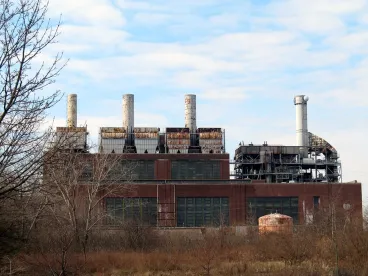Under current Wisconsin law, a property owner is generally liable for contamination regardless of when the pollution occurred and regardless of who caused the contamination. There are some limited exceptions for qualifying local governments, lenders, impacted neighbors and persons who obtain what is known as a Voluntary Party Liability Exemption. But, Wisconsin does not provide “bona fide prospective purchaser” (BFPP) protections for a buyer who wants to knowingly purchase a contaminated property for redevelopment.
On this issue, Congress took the lead in 2002 when it added BFPP protection to the Comprehensive Environmental Response, Compensation and Liability Act, otherwise known as CERCLA. In short, assuming they meet certain requirements, a party with BFPP protection can purchase a property it knows to be contaminated, commonly called a brownfield, without being considered a responsible party under federal law for the pre-existing contamination. Time has shown that offering such protection has increased brownfield investment.
In late July, 2019, EPA issued a guidance document addressing how it interprets and enforces the BFPP protection, along with other, related landowner protections. A review of the Guidance suggests that it may be time for Wisconsin join the party and offer some sort of BFPP protection.
EPA’s Guidance
EPA’s Guidance is formally called “Enforcement Discretion Guidance Regarding Statutory Criteria for Those Who May Qualify as CERCLA Bona fide Prospective Purchasers, Contiguous Property Owners, or Innocent Landowners (“Guidance”).” The Guidance focuses on the common elements found in three defenses to environmental cleanup liability under the CERCLA. The expressed intent of EPA in issuing the Guidance is to “provide general information to landowners, developers, lenders, investors, or other third-party stakeholders who may wish to become involved with impacted properties.”
All Appropriate Inquiry
Most real estate buyers and lenders are going to be familiar with the need to get a Phase I Environmental Site Assessment performed on a property. This is standard practice and also one of the common elements. In other words, a party can’t blindly buy a contaminated site and expect to get the benefit of the defense. EPA refers to it All Appropriate Inquiry (AAI). The Guidance acknowledges that there are now formally recognized standards for conducting these assessments and that these standards, if complied with, satisfy the AAI requirement.
No Affiliation
Another common element is that the buyer can have no affiliation with a party that is otherwise responsible. The Guidance advises that transfers between related corporations or close family members may not qualify for the defenses.
No Disposal
When it comes to brownfields, there are often questions about whether moving contaminated soil around for development can create liability. And, in this regard, it is clear that a purchaser loses the BFPP defense if they engage in disposal activity. The Guidance clarifies that a “secondary disposal” involving the “movement or dispersal of already-once disposed hazardous substances through earthmoving or construction activities” may not result in the loss of the defense.
Compliance With Land Use Restrictions and Institutional Controls
Many cleanups are conditioned on the use of institutional controls or land use restrictions that will continue after the buyer takes ownership. These may include restricting the land from residential use, maintaining a cap or cover over contamination left in place, or restricting the drilling of drinking water wells. The Guidance discusses the steps a buyer can take to develop a property while still complying with these types of conditions.
Reasonable Steps
One of the main obligations imposed on buyers who are seeking BFPP protection is that they must still take “reasonable steps” in response to known contamination. The Guidance provides useful input on what might constitute reasonable steps and makes it clear that taking no steps is likely not reasonable. In the end, each site is somewhat unique and so what may be reasonable on one site may not be reasonable on another. Buyers are encouraged to consider what reasonable steps may be needed and to engage with the regulators early to address redevelopment plans and the steps that should be taken to ensure a problem doesn’t get worse.
Conclusion
While this new Guidance will be helpful to buyers of impacted properties in Wisconsin and may help shield those buyers from federal liability, Wisconsin law still presents a significant barrier to the redevelopment of contaminated properties. The federal BFPP protection has been proven to foster redevelopment of contaminated properties and the Guidance further defines and clarifies the standards for obtaining BFPP protection. If the redevelopment of contaminated properties is one of the goals of environmental regulation in Wisconsin, as it should be, it may be time for Wisconsin to adopt its own bona fide prospective purchaser protection program.




 />i
/>i
